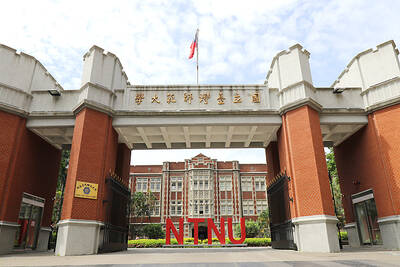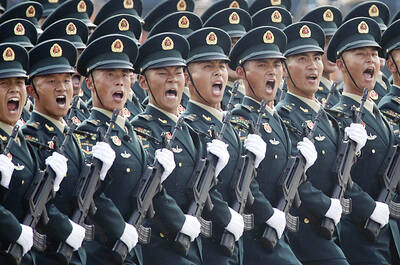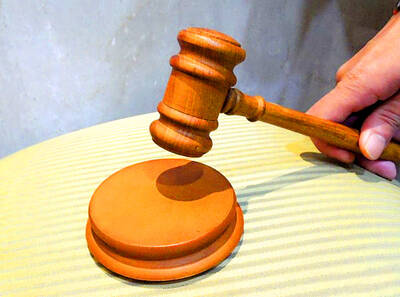Former premier Su Tseng-chang (蘇貞昌) on Tuesday proposed what he called new ideas on a “Taiwan Consensus” as a mechanism for conducting cross-strait talks, capping off a series of similar announcements by other senior members of the pan-green camp.
In an interview with the -Chinese-language Liberty Times (the Taipei Times’ sister newspaper), Su, the object of speculation over his possible bid for the presidency as a Democratic Progressive Party (DPP) candidate, said he wanted to base cross-strait relations on “the cornerstones of democracy,” which he said would better represent the interests of Taiwan.
Su told the paper his ideas were closely connected with the DPP’s 1999 Resolution on Taiwan’s Future, which defines Taiwan as a sovereign country separate from China, while acknowledging the Republic of China (ROC) as the country’s formal title.

Photo: Wang Min-wei, Taipei Times
“The ‘Taiwan consensus’ would better raise the bar in protecting Taiwan’s sovereignty,” he said, without providing specifics.
Su’s office confirmed the former premier would make an additional statement on the consensus this morning.
His comments come in the wake of similar calls by former premier Frank Hsieh (謝長廷) and former vice president Annette Lu (呂秀蓮) — both of the DPP — for a new cross-strait policy to replace the so-called “1992 Consensus” currently used by the government as the basis for bilateral ties.
Hsieh has proposed a “Constitutional Consensus” based on recognition of the ROC Constitution, while Lu has promoted what she termed the “1996 Consensus” — the year, she says, Taiwan became a de facto independent country following its first popular presidential election.
Party watchers said the three consensuses, which do not claim to replace the Resolution on Taiwan’s Future or any ratification by the party, likely represent attempts to appeal to more undecided voters by softening their stance on de jure independence.
Although Su and Hsieh have not ruled out making a bid for the party nomination ahead of next year’s presidential election, Su spokesman Xavier Chang (張敦涵) said the consensus and a possible shot at the presidency were unconnected.
Lu is also believed to be considering a bid.
DPP Chairperson Tsai Ing-wen (蔡英文), another likely contender for the DPP nomination, has pushed the party to work on a 10-year “master plan,” which would include detailed information on how to deal with future challenges arising from cross-strait relations.
The DPP, as well as former president Lee Teng-hui (李登輝), do not recognize the “1992 consensus,” which President Ma Ying-jeou’s (馬英九) administration and Beijing claim has buttressed the rapid development of cross-strait economic ties in the past two years, especially in the economic sphere.
The “1992 consensus,” which refers to “one China” with each side having its own interpretation of what this entails, was allegedly reached in 1992. However, then-KMT legislator Su Chi (蘇起) admitted in 2006 to coining the term in 2000, when he was Mainland Affairs Council chief, before the KMT handed over power to the DPP.
In related developments, Lu, still upset over a decision to base DPP primaries entirely on telephone polls, led several supporters to the DPP central party headquarters to invite Tsai and other senior party officials to a gathering against the changes on Sunday.
Party officials arranged for Lu to meet DPP Secretary-General Su Jia-chyuan (蘇嘉全), who told her that Tsai and himself would be out of town that day, adding that more junior officials would attend on their behalf.
Meanwhile, Hsieh said Tsai should declare her candidacy in the DPP primaries as her high poll figures gave her an advantage.
Once she has gotten this out of the way, “I’ll also give consideration to [a bid for the presidency],” he said.

CHANGING LANDSCAPE: Many of the part-time programs for educators were no longer needed, as many teachers obtain a graduate degree before joining the workforce, experts said Taiwanese universities this year canceled 86 programs, Ministry of Education data showed, with educators attributing the closures to the nation’s low birthrate as well as shifting trends. Fifty-three of the shuttered programs were part-time postgraduate degree programs, about 62 percent of the total, the most in the past five years, the data showed. National Taiwan Normal University (NTNU) discontinued the most part-time master’s programs, at 16: chemistry, life science, earth science, physics, fine arts, music, special education, health promotion and health education, educational psychology and counseling, education, design, Chinese as a second language, library and information sciences, mechatronics engineering, history, physical education

The Chinese military has boosted its capability to fight at a high tempo using the element of surprise and new technology, the Ministry of National Defense said in the Quadrennial Defense Review (QDR) published on Monday last week. The ministry highlighted Chinese People’s Liberation Army (PLA) developments showing significant changes in Beijing’s strategy for war on Taiwan. The PLA has made significant headway in building capabilities for all-weather, multi-domain intelligence, surveillance, operational control and a joint air-sea blockade against Taiwan’s lines of communication, it said. The PLA has also improved its capabilities in direct amphibious assault operations aimed at seizing strategically important beaches,

New Taipei City prosecutors have indicted a cram school teacher in Sinjhuang District (新莊) for allegedly soliciting sexual acts from female students under the age of 18 three times in exchange for cash payments. The man, surnamed Su (蘇), committed two offenses in 2023 and one last year, the New Taipei District Prosecutors’ Office said. The office in recent days indicted Su for contraventions of the Child and Youth Sexual Exploitation Prevention Act (兒童及少年性剝削防制條例), which prohibits "engaging in sexual intercourse or lewd acts with a minor over the age of 16, but under the age of 18 in exchange for

The High Prosecutors’ Office yesterday withdrew an appeal against the acquittal of a former bank manager 22 years after his death, marking Taiwan’s first instance of prosecutors rendering posthumous justice to a wrongfully convicted defendant. Chu Ching-en (諸慶恩) — formerly a manager at the Taipei branch of BNP Paribas — was in 1999 accused by Weng Mao-chung (翁茂鍾), then-president of Chia Her Industrial Co, of forging a request for a fixed deposit of US$10 million by I-Hwa Industrial Co, a subsidiary of Chia Her, which was used as collateral. Chu was ruled not guilty in the first trial, but was found guilty